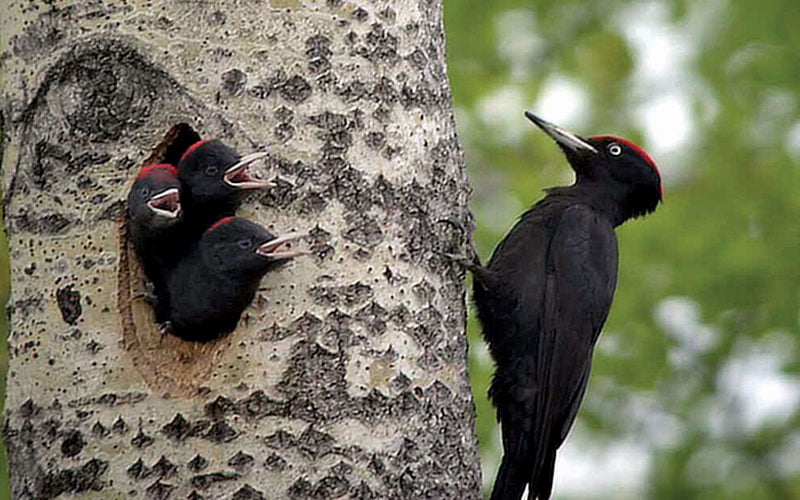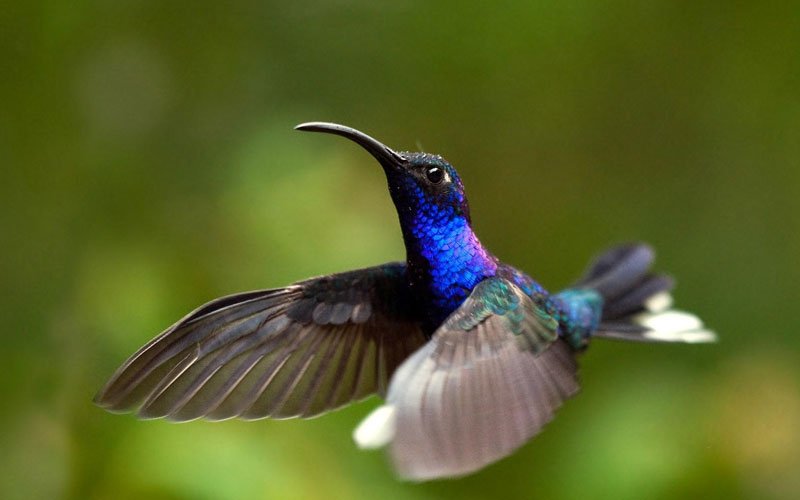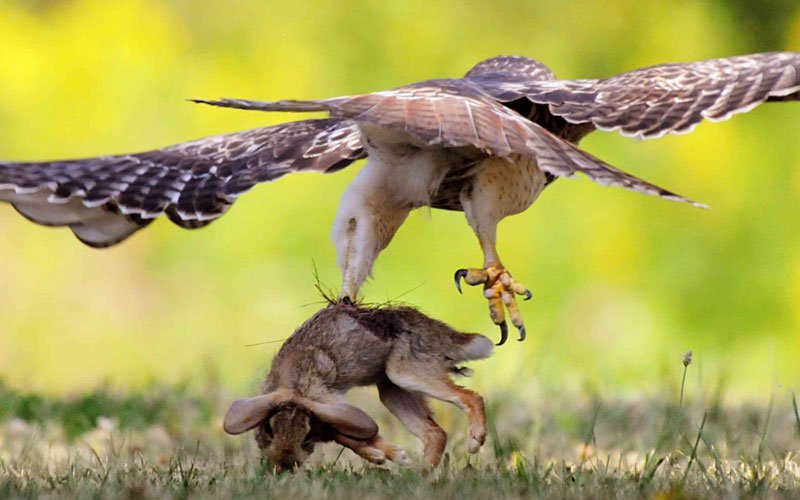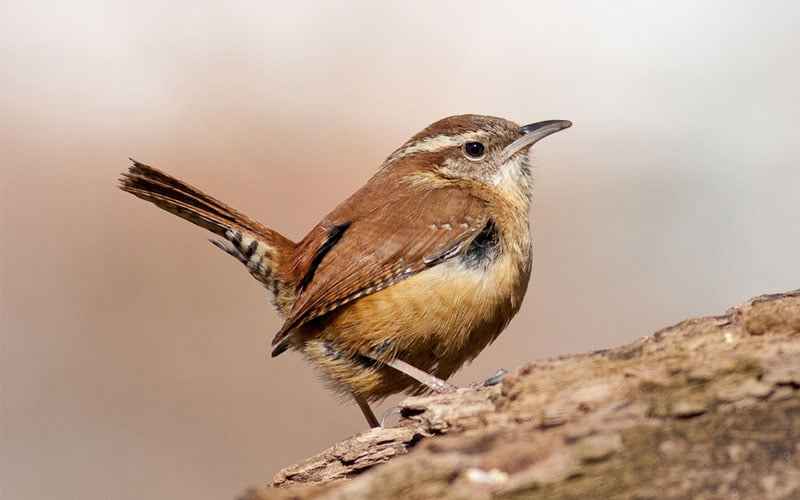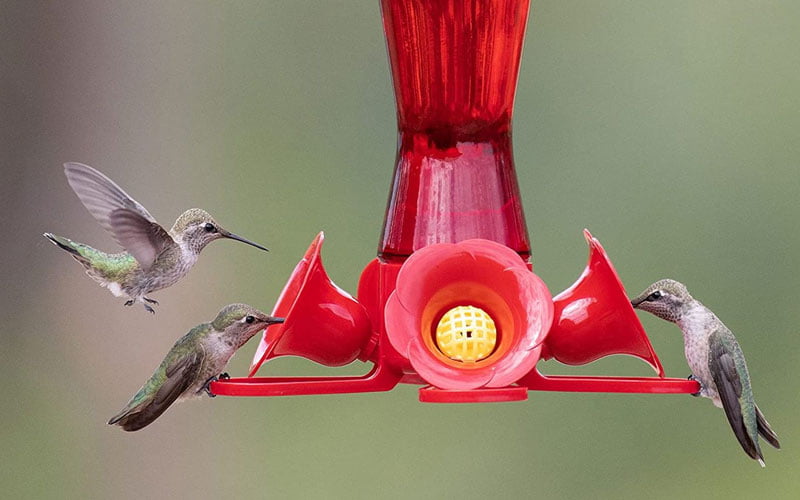Pecking in wood is one of the most natural habitats of woodpeckers. This way, they create holes in the tree and use it to live. Apart from that, they also collect the insects using their long tongues.
That means if there are many holes inside the tree, they must have been foraging for food. In that case, the tree will also be considered unsafe for health.
There are several reasons why woodpeckers peck in wood. If you want to know about those reasons, follow the article until it ends.
What Is Pecking and Why They Peck
The woodpeckers use their strong beak and hit the trees or wood with them. There are several reasons why woodpeckers peck, and it indicates they are searching for food, building a nest, or looking for a mating partner.
In that case, their beaks help them drill holes in the wood. Read the reasons below why the woodpecker’s peck.
1. They Are Building A Nest
You may have seen other birds create nests with twigs and leaves. But this is a bit difficult for the woodpeckers.
They don’t build nests with twigs and leaves; instead, they like to cavity in old, dead, or dying trees. They use that hole as their nest.
Thanks to their aft timer structure around the yard that helps them to build this type of best. Needless today, their wood holes tend to last longer than other nests.
Some woodpeckers come back to their nesting site every year; the others don’t. They like to build another nesting site.
The most exciting thing here is that these woodpeckers’ nests are also used for other birds. Some birds like Bluebirds, Wrens, and swallows use these woodpecker nests as their living place.
2. They Are Trying To Establish Their Territory
The woodpecker pecks on wood to inform other birds that they are present in that place. As you know, the woodpeckers’ nest is white different from others.
This type of communication is known as ‘drumming .’As you know, the woodpeckers are not very vocal birds; instead, they peck and use it to communicate with other birds.
Did you know? They tend to peck on any hard surface or hardwood to make this sound loud and far-reaching.
3. The Search For Foods
The woodpeckers mainly eat insects that live in old and rotten trees. With their strong beak and relentless Pecking (up to 10,000 a day), they find out those insects from the wood.
The woodpeckers also have a long and sticky tongue to pull out food. The woodpeckers consider the ants and larvae as their favorite snacks.
This method of finding foods is helpful during the cooler months. At this time, the insects and bugs hide in the trees.
Not only insects but woodpeckers also consume other nutrients from the tree, such as tree sap. Some species of woodpeckers also eat fruit and seeds.
4. Which Trees Do Woodpeckers Like
The woodpeckers like pine trees for their sweet sap and pine nuts. The woodpecker’s peck’s other trees include oak trees, cedar, redwood, etc.
The woodpeckers generally like the trees that are old or dying or dead. But when they search for food, they prefer to use a tree that has a soft interior.
The snag, dead trees, and stumps are good places where they like to build nests. First, they empty the rotten wood and then drill a hole here.
How Can Woodpeckers Withstand the Pecking
Pecking puts force on the woodpecker’s brain. Still, they don’t get hurt as their bodies adapt to this kind of activity.
The woodpeckers peck with a lot of force ten times greater than could cause brain injury in humans. But the woodpeckers don’t even after continuing this practice for a long time. Do you know the reason?
1. The Woodpeckers Head
The woodpecker’s head is designed in a bonny-tongue supporting structure that wraps around the skull of woodpeckers and prevents any direct injury. This is also known as hyoid, and it absorbs the energy produced with direct collision.
2. The Woodpeckers Brain
The woodpeckers generally have brains tightly packed inside of their skull. So, when the woodpecker peck, the brain doesn’t get enough space to move and stays protected.
So, now you know how the woodpeckers withstand them from getting injured due to Pecking. But that does not mean that the woodpeckers never get hurt.
When they get hit or impacted due to other motions, the woodpeckers are likely to get hit. But the research says that woodpeckers don’t suffer brain damage at all.
Other reasons why the woodpeckers don’t get hurt from Pecking:
- They have two forward toes and two backward toes that help hold a grip over the wood surface.
- The woodpeckers have stiff tail feathers that keep them balanced when pecking.
- At the back of their jaw, they have a shock absorber. It allows them to tap on the wood without getting any concussions continuously.
- The woodpeckers also have bristled over their nostrils. It helps the bird to avoid inhaling any wood chips.
How Woodpeckers Cause Damage
Generally, the woodpeckers do minor damage. But if it starts pecking at your home, you can expect damage to your power wiring. Let’s see how it product damage:
1. Trees
As discussed, woodpeckers don’t damage healthy trees, and they only damage three, either dead or infested by the insects.
The woodpeckers give an alert for the unhealthy trees. So, the park rangers removed the tree by assuming the woodpeckers’ behavior.
2. Houses
The woodpeckers can not differentiate between trees and home wood. So, it can cause damage to your home, too.
The holes created by the woodpeckers are used as the entry point for other insects. Apart from that, if rainwater gets access through these holes, it causes severe damage like mold development.
The woodpeckers can also damage non-wood materials such as metal, water pipes, plumbing systems, etc.
How To Prevent Woodpecker Damage
The first thing you can do to stop damage is to don’t give it access to the tree. You can buy the available market products that can be applied to the tree’s trunk, making it difficult for the woodpeckers to sit in their nest.
Another way to prevent the woodpeckers’ damage is hanging mirrors, old CDs, or other reflective mirrors. You can also take the help of loud noises to frighten the woodpeckers.
Other methods, such as plastic owls or hawks, can do the work well. But you should immediately remove it before the woodpeckers don’t think of these all as a threat.
But remember that local laws protect the species of woodpeckers. So, intentionally killing them is illegal, resulting in imprisonment.
Final Thought
The woodpeckers carry a destructive nature. Still, they are a part of the natural environment, and it control the wood-burning insects and take control of it.
Apart from that, the woodpeckers look very classy if you watch them. The woodpeckers drill holes for their living, searching for food or communicating.
So, if you can give them a chance to peck away those damaged trees, you can get to see the fantastic nature of woodpeckers. Isn’t it a good thing to have woodpeckers in your yard?
Frequently Asked Questions
Q: Is Woodpecker A Bad Thing?
The woodpeckers generally damage trees already damaged or infested by insects, and they are one of the essential parts of our ecosystem. Research says woodpeckers remove 85% of Ash borer larvae from the infested tree.
Q: Do Woodpeckers Come Back To the Same Spot?
Woodpeckers create cavities in trees for their living. While some woodpeckers return during spring there, some others do not. Like downy or hairy, the woodpeckers prefer to create new caveated places rather than living in their old nest.
Q: What Time Of The Day Do Woodpeckers Peck?
Generally, the woodpeckers start drilling when they see the first morning light. Apart from that, they can be present anytime when there is light present.
Q: How long does it take for a woodpecker to make a hole?
The woodpeckers can take 10-28 days to drill a hole. Both male and female woodpeckers can continue that process, and they actively peck in wood and create a hole in that place.





